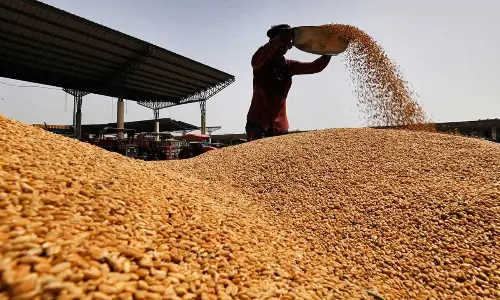Ultra-processed food exposure and adverse health outcomes

Promoting Comprehensive health, nutrition education and wellness programs among school children
Amidst rising concerns over adolescent health, a new study underscores the dangers of ultra-processed foods in India. Reports reveal a significant surge in consumption among Indian youth, posing heightened risks of chronic illnesses and premature mortality. Factors driving this trend include increased disposable income and the allure of convenience. The detrimental impact of aggressive food marketing on children’s dietary habits is also highlighted, prompting calls for robust regulatory measures. As experts advocate for comprehensive health and nutrition education programs in schools, the imperative to invest in children’s nutrition emerges as crucial in combating obesity and fostering long-term wellness.
Why should adolescents reject ultra-processed foods?
According to recent reports, an increasing number of Indian adolescents are consuming ultra-processed foods, increasing chances of severe diseases and death. India grew from 900 million in 2006 to over 37.9 billion in 2019, according to a 2023 report by the (WHO) and (ICRIER) .Consumption of such foods has grown consistently in India, 13.37% between 2011 to 2021, which is among the highest globally. A new study found 32 harmful health conditions. These include a higher risk of cancer, heart disease, mental health, Type 2 diabetes and early death.
What are the main reasons for the increased consumption of ultra-processed foods in India?
Due to the Growing income , fatty foods consumption has increased . Another side include convenience, longer shelf life and quick access. People in India can act quickly and limit the damage with robust nutrition policies, regulations, government led policy frameworks and dietary guidelines aimed at targeting and reducing dietary exposure to ultra-processed foods for improved human health.
Throw some light on the harmful impact of food marketing on children?
Millions of children worldwide are consuming too many highly processed foods and non-alcoholic beverages that are high in saturated fats, trans fatty acids, free sugars or salt with devastating consequences for their health and development & also Evidence shows that food marketing impacts children’s food preferences and dietary intake. Food marketing is a profit driven activity that represents “one of the most under appreciated risks to children’s health & well being”, as highlighted by the recent(WHO) & (UNICEF) . More than ever children are exposed to marketing across multiple channels, including online via digital marketing, They use striking graphics, employ humour and fun in their messaging; and link their product promotions to gifts, competitions and entertainment events. Many companies feature movie and sports celebrities, as well as cartoon and brand equity characters which are popular with children.
What are the best preventive strategies to protect children from the harmful impact of food marketing?
• Regulation of school food environments (including feeding program’s and foods sold in schools).
• Nutrition labeling Regulations, including nutrient declarations, health and nutrition claims, and front of pack labels (e.g. warning logos for foods high in, or with an excess of, nutrients of public health concern).
• Fiscal policies to limit consumption of targeted foods and encourage consumption of healthier foods.
• Last but not the least government should have an imperative to adopt a child rights-based approach to protect children from the harmful impact of food marketing. As this approach promotes good governance, clear roles and responsibilities and accountability while empowering children as individuals.
Why should schools invest in children’s nutrition?
Nutrition education is a powerful tool in the fight against childhood obesity.
• Schools’ investment in child nutrition can improve cognition, academic performance and attention span.
• Schools can contribute to building a healthier India, by preventing burden of non-communicable diseases and should offer health services for a range of conditions including diabetes, overweight, obesity and under nutrition.
• Promote the consumption of safe and balanced diet among children as per the “My Plate for The Day” recommended by the National Institute of Nutrition.
• Cafeterias can be decorated with nutrition promotion posters or student artwork promoting healthy eating.
• School Garden programs can increase student’s nutrition knowledge. Students can prepare soil for the garden, plant seeds, harvest the fruits and vegetables. Produce from school gardens can be incorporated in school meals.
(The author is a Chief Clinical Nutritionist at Rainbow Children’s Hospital Himayatnagar Hyderabad)




















